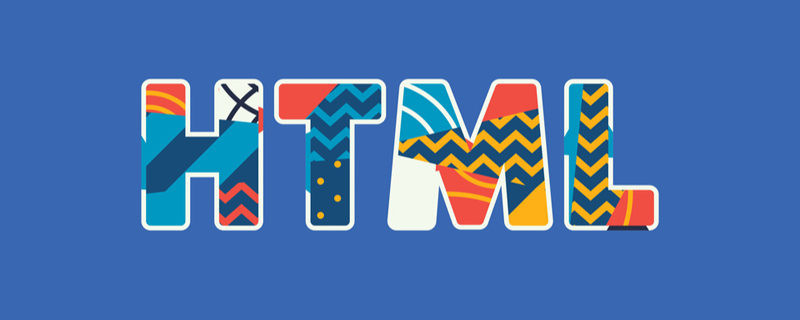Home >Web Front-end >Front-end Q&A >Is html a software?
Is html a software?
- 青灯夜游Original
- 2021-02-20 17:15:113566browse
html refers to "Hypertext Markup Language", which is a markup language, not software. HTML is a language for creating web page files. It uses markup instructions to display images, sounds, pictures, text animations, movies and other content.

The operating environment of this tutorial: Windows 7 system, HTML5 version, Dell G3 computer.
html refers to "Hypertext Markup Language", which is a markup language, not software.
The full English name of HTML is Hyper Text Markup Language, which is the description language of WWW; it includes a series of tags. These tags can unify the document format on the network and connect scattered Internet resources into a logical whole.
Since 1990, HTML has been used as the information representation language of the World Wide Web. Files described using HTML need to be displayed through a web browser. HTML is a language for creating web page files. It uses markup instructions (tags) to display images, sounds, pictures, text animations, movies and other content. In fact, every HTML document is a static web page file. This file contains HTML instruction codes. These instruction codes are not a programming language, but a markup structure language that layouts the display position of data in a web page. It is easy to learn. Easy to understand and very simple.
Related recommendations: "html video tutorial"
HTML is a grammatical rule used to mark how Web information is displayed and other characteristics. It was originally developed in 1989 Invented by Tim Berners-Lee of CERN. HTML is based on the older language SGML definition and simplifies the language elements. These elements are used to tell the browser how to display data on the user's screen, so they have been supported by various web browser manufacturers for a long time.
HTML has the following versions in history:
①HTML 1.0: Released as an Internet Engineering Working Group (IETF) working draft in June 1993.
②HTML 2.0: Released as RFC 1866 in January 1995, it was declared obsolete after its release in June 2000.
③HTML 3.2: January 14, 1997, W3C recommended standard.
④HTML 4.0: December 18, 1997, W3C recommended standard.
⑤HTML 4.01 (minor improvement): December 24, 1999, W3C recommended standard.
⑥HTML 5: HTML5 is recognized as the next generation Web language. It has greatly improved the capabilities of the Web in terms of rich media, rich content and rich applications. It is hailed as an important driving force that will eventually change the mobile Internet. Internet Explorer 8 and earlier versions are not supported.
HTML plays an important role and has an important position in the rapid development of the Web. However, with the deepening of network applications, especially e-commerce applications, the shortcomings of HTML's oversimplification quickly became apparent: HTML is not extensible. HTML does not allow application developers to define custom markup for specific application environments. HTML can only be used for information display. HTML can set the display mode of text and pictures, but it has no semantic structure, that is, HTML displays data according to layout rather than semantics. With the development of network applications, various industries have different needs for information, and these different types of information may not always be displayed in the form of web pages. For example. When searching for data via a search engine, there are advantages to displaying data semantically rather than layout-wise.
In short, the shortcomings of HTML make it poor interactivity and ambiguous semantics. These shortcomings are difficult to adapt to the requirements of the rapid development of the Internet. Therefore, a standard, concise, rigorously structured and highly extensible XML was created.
For more programming related knowledge, please visit: Programming Video! !
The above is the detailed content of Is html a software?. For more information, please follow other related articles on the PHP Chinese website!

